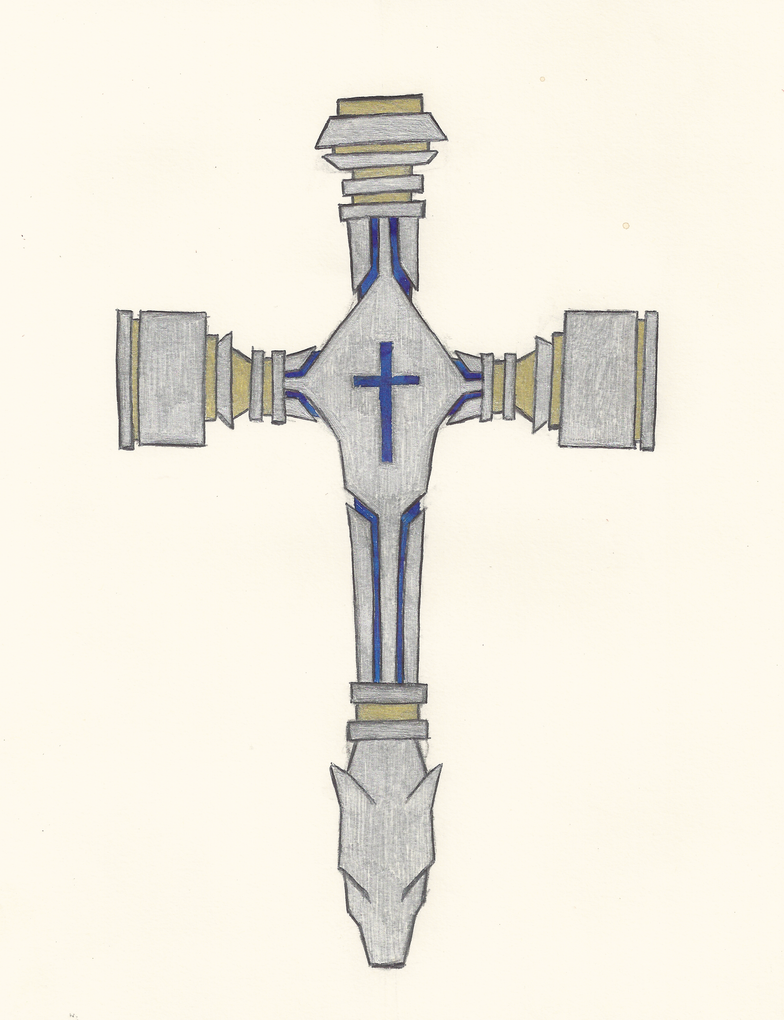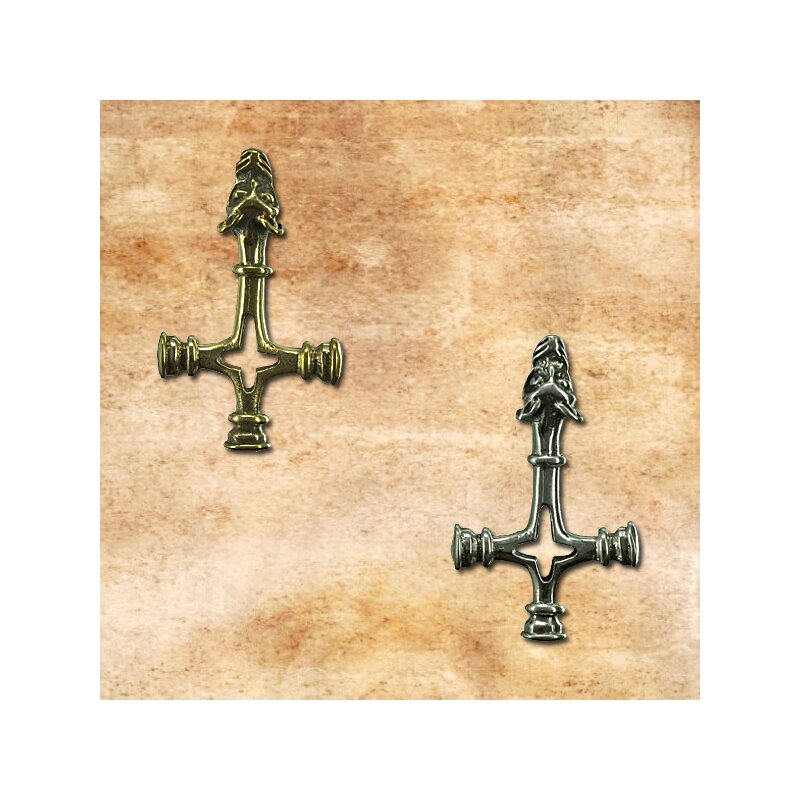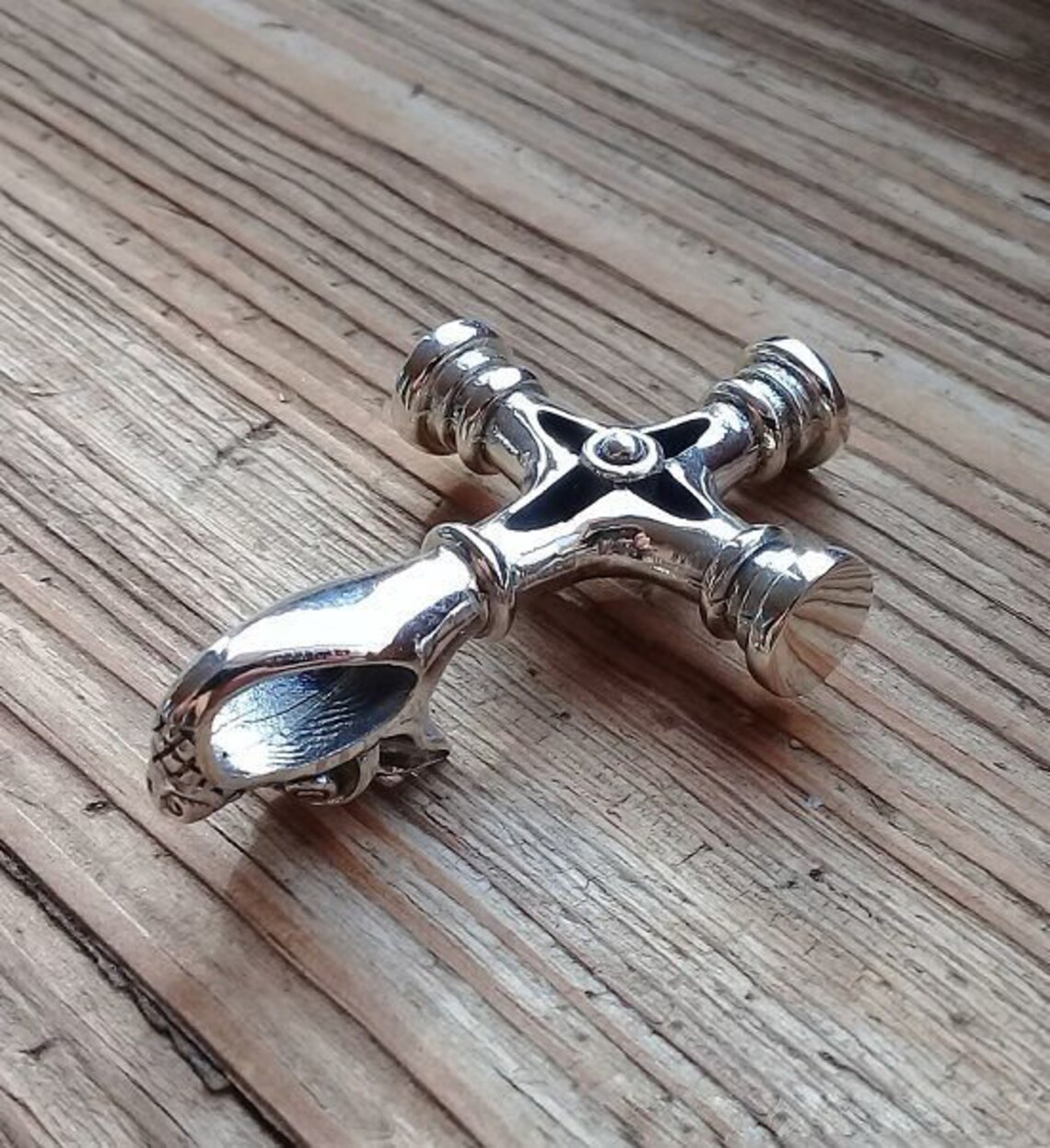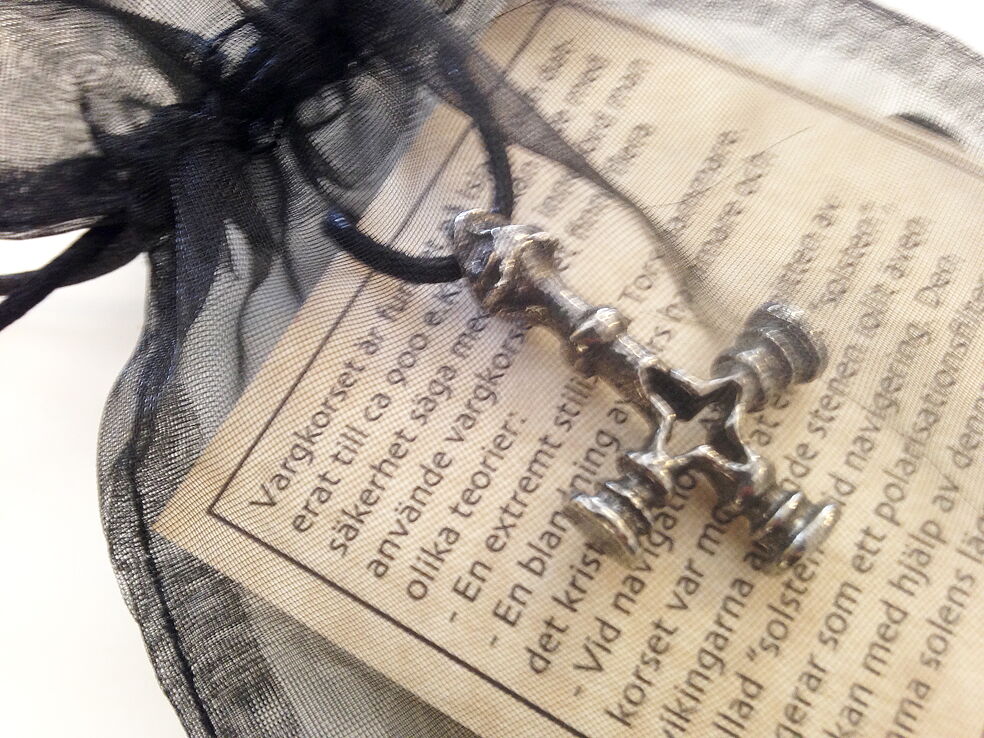
Large Wolf Cross Pendant Icelandic Mjolnir with Wolf Heads Sons of Vikings
As an amulet of protection, the symbol of Mjolnir was very common and one of the most popular Viking symbols.When early Norse Christianity appeared, later forms of Mjolnir were used - such as the Wolf's Cross or Dragon's Cross. The Valknut. The Valknut is the Norse symbol for death in a battle.The symbol was also known as "Hrungnir's Heart", "the Heart of Vala", "borromean.

Wolf cross by KnightWolfAlpha on DeviantArt
Thor's Cross. Thor, an ancient Nordic god. Powerful yet popular; as most gods are. Thor's Cross is a misnomer: The symbol is not supposed to represent a cruciform, rather it is a hammer and seldom seen in a Christian context. The hammer does, however, appear in several places in the Bible; as a war club, murder weapon, and tool for construction.

Emma Lipker Wolf And Cross Tattoo Design
Viking necklace featuring the famous wolf cross from Fossi, Iceland, and wolf head end caps.Our Wolf Cross is designed differently from the authentic artifact featuring more animalistic or zoomorphic elements.It comes with a braided leather cord and two wolf heads biting an omega shape jewelry hook.. Design & Type: Icelandic Wolf Cross Necklace

Wolf Cross by Oswulf on DeviantArt
Wildlife Management - A term referring to the technical and scientific skills applied to protect, conserve , preserve, extend and limit the value of wildlife and wildlife habitat. This glossary includes terms you will encounter in your reading about wolves and wild lands. Boldfaced words within the definitions are words that are defined.

Islandic Wolfs Cross 24, medium Bronze, 15,90
The wolf (Canis lupus; pl.: wolves), also known as the gray wolf or grey wolf, is a large canine native to Eurasia and North America.More than thirty subspecies of Canis lupus have been recognized, including the dog and dingo, though gray wolves, as popularly understood, only comprise naturally-occurring wild subspecies.The wolf is the largest extant member of the family Canidae, and is.

Wolf's Cross Pendant. Nordic Sacred Protection Amulet. Etsy
There were many powerful symbols from the Norse-Viking period ranging from the wolf (for protection), to the horse (protection in travel), the troll cross (an amulet that protected one from trolls), the image of the Vegvisir ('way guide', a late Icelandic symbol which helped one find one's way) and the Web of Wyrd (web of fate), as well as the runes which were thought to evoke mystical powers.

Large Wolf Cross Pendant Icelandic Mjolnir with Wolf Heads Sons of Vikings
Wolf symbolism and meanings include loyalty, family, friendship, teamwork, protection, wildness, freedom, instincts, playfulness, and other noble traits. Historically, wolves lived throughout the world, so they are subjects in the mythology and folklore of many cultures. In addition, the wolf spirit animal is a sacred figure to those who feel a.

Wolf Cross Pagan Gods Viking Symbol Plaques Home Decor Norse Etsy Pagan gods, Norse runes, Norse
Wolves in Different Cultures Wolves are a common symbol in many cultures. In fact, wolves have been used as symbols since ancient times and they appear in the art of virtually every culture on Earth. For example, In Native American culture, wolves were viewed as powerful beings who could shapeshift into human form or that

Wolf's Cross Viking Pagan
Any actual historical record of the Wolf Cross, or the original one being recovered? Internet searches just reveal a lot of Etsy sales and anecdotal speculation.

The Wolf Cross
The 'Wolf Cross' from Foss, Iceland. This 10th - 11th century silver amulet is something of an enigma. It was discovered at Foss, Iceland, and is often referred to as the Wolf Cross ( vargkors ). Its shape can either be seen as a Thor's Hammer, or as a Christian Cross. If it is to be seen as a cross, is the wolf's head seen to be.

Wolf's Cross
Wolf Symbolism and Meanings. The Wolf is a powerful and mysterious creature. It has been both feared and revered throughout history. The Wolf is a symbol of strength, courage, and family. It is also a symbol of wisdom, intelligence, and loyalty. The Wolf is a popular figure in folklore and mythology.

Large Wolf Cross Pendant Icelandic Mjolnir with Wolf Heads Sons of Vikings
Wolf cross is found in Iceland, dated to about 900 AD One can not say with certainty to what meaning the wolf cross had. There are several theories: - An extremely stylized Thor's hammer. - A mixture of Thor's hammer and the Christian cross. - In case of navigation. That in the middle of the cross was mounted a so-called "Sunstone" Vikings used.

Wolf, Raven, and Celtic Cross r/DrawMyTattoo
ALTERNATE NAMES: Wolf's Hook, Dopplehaken The Wolfsangel is an ancient runic symbol that was believed to be able to ward off wolves. Historically, it appeared in Germany in many places, ranging from guidestones on the sides of roads to heraldic use in the coats of arms of various towns; there is even a German city called Wolfsangel.

Wolf's Cross Pendant. Nordic Sacred Protection Amulet. Etsy
White signifies purity and innocence, and it also relates to psychic powers. Seeing a white wolf is highly unusual, and could be a sign of your own spiritual abilities or development. It could also be drawing attention to the need to balance logic and emotion. Brown Wolves. Brown is connected to the earth and nature.

WOLF CROSS VIKING NECKLACE
Tyr (Tiwaz, Teiwaz) Rune. Týr is the Norse god of war, portrayed as one-handed warrior. Týr's symbol is sword. Once he played a very important role in the Germanic pantheon. Tuesday is actually Týr's day (Anglo-Saxons called him Tiw). By the Viking Age Týr was somewhat overshadowed by Thor and Odin.

Wolf Cross Necklace Icelandic Viking Jewelry Norse Pendant Sons of Vikings
Wolves in folklore, religion and mythology. The wolf is a common motif in the foundational mythologies and cosmologies of peoples throughout Eurasia and North America (corresponding to the historical extent of the habitat of the gray wolf), and also plays a role in ancient European cultures. The modern trope of the Big Bad Wolf arises from.